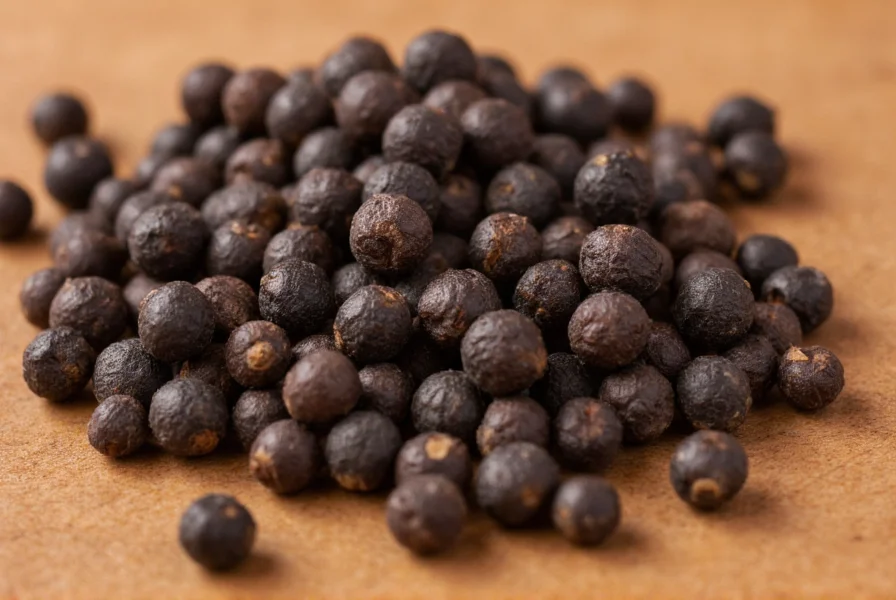Understanding Pepper: Beyond the Basic Definition
When people ask what is pepper made of, they're typically referring to black pepper—the ubiquitous spice seasoning meals globally—not bell peppers or chili peppers, which belong to an entirely different plant family. This distinction is crucial for accurate understanding of pepper's composition and origins.
The Piper Nigrum Plant: Source of True Pepper
True pepper (Piper nigrum) is a perennial climbing vine that produces small, berry-like fruits called peppercorns. These peppercorns undergo different processing methods to create the various pepper types we recognize:
- Black pepper: Made from unripe green berries that are cooked and sun-dried, causing them to turn black
- White pepper: Produced from ripe berries with the outer fruit layer removed, leaving only the seed
- Green pepper: Made from unripe berries preserved through freeze-drying or sulfur dioxide treatment
- Red pepper: Created from fully ripe berries that are dried while still red
| Component | Percentage in Black Pepper | Function |
|---|---|---|
| Piperine | 5-9% | Provides pungent heat and bioactive properties |
| Essential Oils | 1-3% | Contributes to aroma and flavor complexity |
| Carbohydrates | 50-60% | Primary structural component |
| Protein | 10-12% | Nutritional component |
| Minerals | 4-6% | Includes potassium, calcium, magnesium |
Chemical Composition of Black Pepper
The distinctive properties of black pepper come from its complex chemical makeup. Piperine (C17H19NO3) is the primary alkaloid responsible for pepper's spiciness, but it's not capsaicin like in chili peppers—that's a common misconception about what gives pepper its heat. The essential oils in pepper, including limonene, pinene, and sabinene, contribute to its complex aroma profile.
Unlike chili peppers which activate heat receptors through capsaicin, black pepper creates a different sensation through piperine's interaction with TRPV1 receptors. This explains why the spiciness of black pepper feels different from chili peppers—it's a warming sensation rather than burning heat.

From Vine to Spice: The Pepper Production Process
Understanding where does pepper come from requires examining its journey from vine to spice container:
- Cultivation: Piper nigrum vines grow in tropical climates, requiring support structures to climb
- Harvesting: Berries are picked when green (for black pepper) or fully red (for white or red pepper)
- Processing: For black pepper, berries are briefly cooked in hot water then sun-dried for 1-2 weeks
- Maturation: During drying, enzymatic reactions create piperine and turn berries black
- Sorting: Peppercorns are graded by size, color, and quality before distribution
Nutritional Profile and Practical Implications
While used primarily as a seasoning, black pepper offers more than just flavor. The question what is pepper made of nutritionally reveals a spice with modest nutritional value but significant bioactive properties. One tablespoon (6g) of black pepper contains approximately:
- 13 calories
- 0.4g fat
- 3g carbohydrates
- 0.7g protein
- Significant amounts of manganese, iron, and vitamin K
Most notably, piperine enhances the bioavailability of other nutrients—a property known as bioenhancement. This explains why black pepper is often paired with turmeric, as piperine increases curcumin absorption by up to 2,000%.

Common Misconceptions About Pepper
Several misunderstandings persist about what is pepper made from:
- Misconception: Black pepper and chili peppers are closely related
Reality: They belong to different plant families (Piperaceae vs. Solanaceae) - Misconception: The heat in pepper comes from the same compound as in chili peppers
Reality: Pepper uses piperine; chilies use capsaicin - Misconception: White pepper is a different plant than black pepper
Reality: Both come from Piper nigrum, differing only in processing
Historical Context of Pepper
Pepper's value throughout history stems directly from what gives pepper its unique properties. In ancient times, pepper was so valuable it was used as currency and called "black gold." Its preservative qualities (from antimicrobial compounds) made it essential before refrigeration. The quest for direct access to pepper trade routes literally shaped world history, motivating explorers like Vasco da Gama.
Frequently Asked Questions
What is the main compound that makes black pepper spicy?
The primary compound responsible for black pepper's spiciness is piperine, which constitutes 5-9% of dried black pepper. Unlike chili peppers that use capsaicin, piperine creates a different sensation by interacting with TRPV1 receptors, producing a warming rather than burning heat.
Is black pepper made from the same plant as white pepper?
Yes, both black and white pepper come from the same plant—Piper nigrum. The difference lies in processing: black pepper uses unripe berries that are cooked and sun-dried, while white pepper uses ripe berries with the outer fruit layer removed, leaving only the seed.
How does pepper's composition affect its health benefits?
Piperine, the active compound in pepper, enhances nutrient absorption (bioenhancement), particularly for compounds like curcumin in turmeric. Pepper also contains antioxidants and antimicrobial compounds that contribute to its historical use as a preservative and traditional medicine.
Why does black pepper lose potency over time?
Black pepper loses potency because its volatile essential oils and piperine degrade when exposed to air, light, and moisture. Whole peppercorns retain freshness much longer than ground pepper since the protective outer layer remains intact until grinding.











 浙公网安备
33010002000092号
浙公网安备
33010002000092号 浙B2-20120091-4
浙B2-20120091-4